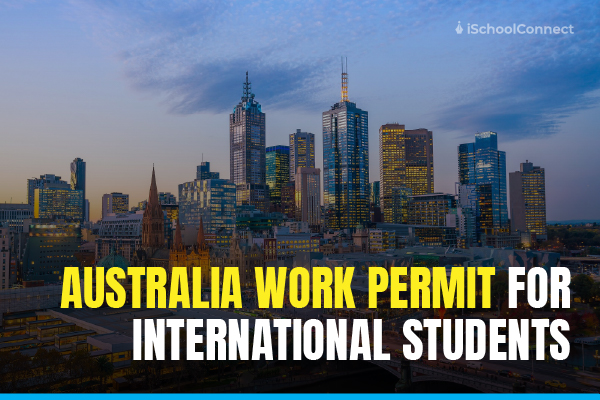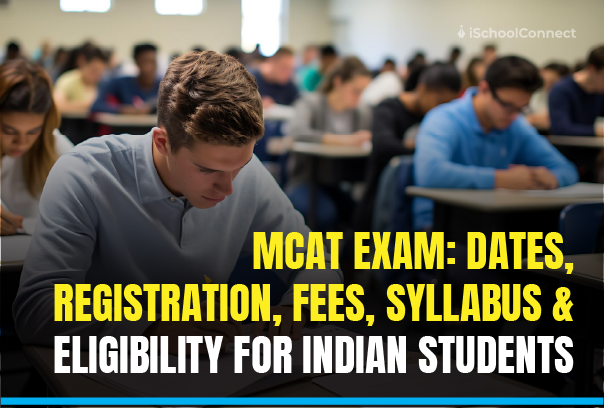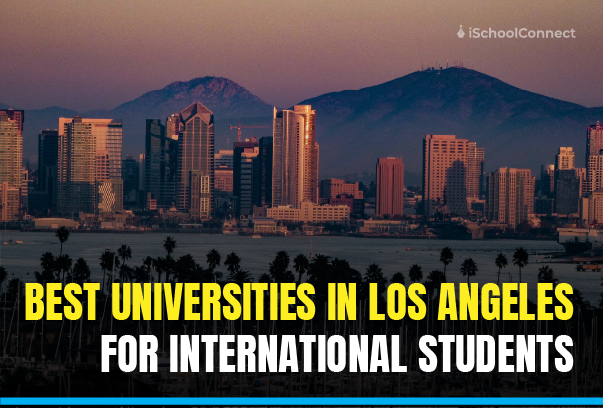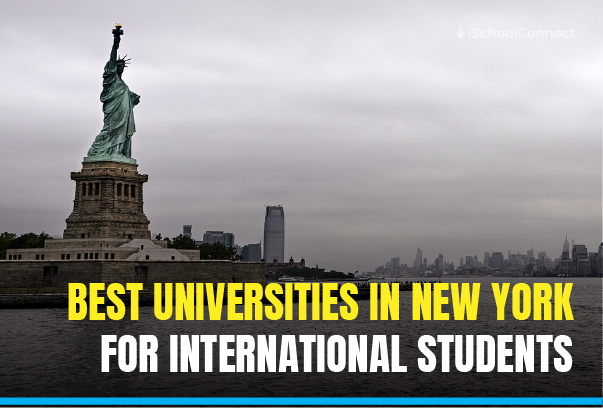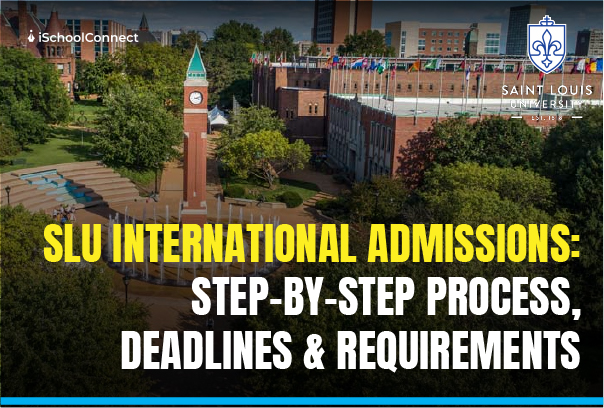Table of Contents
- What is an Australia Work Visa & What is the Need for it?
- Types of Australia Work Visa
- Eligibility Criteria
- Specific Visas
- Application Process
- Recent Changes in Australia Work Visa
- Resourceful Tips to Ace Australia’s Work Permit Visa Interview
- Benefits of Working in Australia
- Challenges to Consider
- Why Work in Australia?
- Summary
- FAQs
For individuals looking to explore their career potential abroad, an Australian work visa opens the door to a world of possibilities. Whether you’re seeking temporary employment, planning to settle permanently, or looking to gain professional experience, understanding the requirements, types, and benefits of Australia’s work visa is the first step toward achieving your goals. Let’s dive into the details to help you navigate the process seamlessly.
Read More: 10 best cities to work in Australia in 2024
What is an Australia Work Visa & What is the Need for it?
A work permit for Australia, often referred to as a work visa, is a legal document allowing foreign nationals to work in the country for a specific period. It is issued by the Australian government and matches foreign workers to the appropriate visa according to the job they intend to perform and the corresponding industry. An Australian Work Visa is important to maintain legal and regulatory compliance surrounding employment in Australia.
Importance of Obtaining a Work Permit
Obtaining an Australia Work Visa is necessary for foreign nationals wishing to work in Australia. This requirement prevents illegal employment practices and ensures that all workers contribute to the country’s social and economic welfare. Employers are obligated to verify their employees’ work eligibility, and failure to do so can result in hefty fines and penalties for hiring undocumented workers.
Read More: 5 highest paying jobs in Australia for Indians
Types of Australia Work Visa
Australia offers a variety of work permits tailored to different needs and situations for foreign nationals wishing to work in the country. Each work permit comes with its own unique purpose, benefits, age restrictions, visa costs, and application deadlines.
- Temporary Skill Shortage Visa
Explore the table below to learn in detail about the Temporary Skill Shortage Visa and its different facets, such as Utility/Purpose, Age Bar, and Benefits, among others.
| Temporary Skill Shortage Visa: Overview | |
| Purpose | The Temporary Skill Shortage Visa allows employers to address labor shortages by bringing in skilled workers when they cannot find a suitable Australian candidate. |
| Benefits | Visa holders can live and work in Australia for up to four years with the option to apply for permanent residency later. Additionally, it provides opportunities to gain valuable international work experience. |
| Age Bar | There is no specified age limit. |
| Visa Cost in Rs | The visa costs approximately ₹82,397, which varies depending on the specific circumstances. |
| Application Deadline | There is no specific deadline; applications can be submitted anytime as long as the visa program is open. |
Explore: 6 Amazing social work programs in Australia
- Employer Nomination Scheme Visa (subclass 186)
Discover everything there is to know about the Employment Nomination Scheme Visa through the table below.
| Employer Nomination Scheme Visa- An Overview | |
| Purpose | This visa allows skilled workers nominated by their employer to live and work in Australia permanently. |
| Benefits | Successful applicants enjoy permanent residency, enabling them to access healthcare, education, and other benefits available to Australian citizens. |
| Age Bar | Applicants must generally be under 45 years old, with some exceptions for certain skills and occupations. |
| Visa Cost in Rs | The fee for this visa is approximately ₹29,761. |
| Application Deadline | Similar to the 482 visa, there is no fixed deadline, allowing applicants to apply when ready. |
- Skilled Independent Visa (subclass 189)
Discover all the essential highlights of the Skilled Independent Visa (subclass 189) through the table below.
| Skilled Independent Visa- Highlights | |
| Purpose | This visa is designed for invited workers who possess skills needed in Australia and allows them to live and work permanently in the country. |
| Benefits | It grants full permanent residency, allowing visa holders freedom to live and work anywhere in Australia, as well as access to government services. |
| Age Bar | Applicants need to be under 45 years of age during the application process. |
| Visa Cost in Rs | This visa costs around ₹2,22,991. |
| Application Deadline | Applicants can apply year-round, but the submission must be completed within 60 days of receiving an invitation through the skills assessment. |
- Skilled Nominated Visa (subclass 190)
Skilled Nominated Visa entertains a vast number of applicants every year. Explore everything there is to know about the Skilled Nominated Visa (subclass 190) through the table given below:
| Skilled Nominated Visa- Highlights | |
| Purpose | This visa allows skilled workers nominated by a state or territory government to live and work permanently in Australia. |
| Benefits | Besides permanent residency, it enables applicants to enjoy various benefits available to residents, including healthcare and education options. |
| Age Bar | Applicants must be under 45 years old at the time of applying. |
| Visa Cost in Rs | The approximate cost is around ₹2,62,959. |
| Application Deadline | As with previous visas, there’s no specific deadline; applications can be made at any time as long as the relevant state invites the applicant. |
- Regional Sponsored Migration Scheme Visa (subclass 187)
What is the purpose of the Regional Sponsored Migration Scheme Visa, cost in rupees, and benefits? Let’s get to know everything and more through the table below:
| Regional Sponsored Migration Scheme Visa-Key Highlights | |
| Purpose | This visa enables skilled workers to live and work in specific regional areas of Australia indefinitely. |
| Benefits | Holders gain the advantage of permanent residency in Australia, including access to social services and the ability to bring family members. |
| Age Bar | Similar to other skilled visas, applicants need to be under 45 years of age, though some exemptions apply. |
| Visa Cost in Rs | The estimated cost is approximately ₹2,62,969. |
| Application Deadline | There are no official deadlines; applicants can submit applications at any time as long as they meet eligibility requirements. |
- Temporary Graduate Visa (subclass 485)
Explore the table below to learn about the Temporary Graduate Visa:
| Temporary Graduate Visa- Key Highlights | |
| Purpose | This visa allows international students who have recently graduated from an Australian educational institution to live and work in Australia temporarily. |
| Benefits | It offers the chance to gain relevant work experience in Australia after graduating, which can be vital for obtaining permanent residency. |
| Age Bar | Applicants must be under 35 years of age. |
| Visa Cost in Rs: | The cost is around ₹42,172 to ₹1,07,223. |
| Application Deadline | There is no strict deadline, but applications must be lodged within six months of holding a valid student visa. |
Each visa type serves a different purpose and comes with its own set of benefits, age restrictions, costs, and timelines, making it essential to choose the one that best aligns with your professional goals and personal circumstances.
Read More: Australia band requirements | All about IELTS for your visa!
Eligibility Criteria
Eligibility criteria for obtaining an Australia Work Visa vary depending on the specific type of visa one is applying for.
General Requirements
Most Australian work visas share a few common eligibility criteria that applicants must meet. The following are general Australia Work Visa requirements:
- Skills Assessment: Applicants must have the skills and qualifications required for the nominated occupation. This often involves obtaining a skills assessment from a relevant authority.
- English Proficiency: A certain level of English language proficiency is usually a prerequisite, and applicants must provide evidence of their English skills through recognized tests like IELTS, PTE, or TOEFL.
- Health Examination: Candidates must pass health examinations to ensure they meet Australia’s health standards, which might include a medical examination and specialized tests depending on their circumstances.
- Character Requirements: Applicants must provide police certificates to show they have no significant criminal convictions and must meet character requirements specified by the Australian government.
- Age Limit: Many work visas have an age limit, usually requiring applicants to be under 18-45 years old, though some exceptions apply depending on the type of visa.
Specific Visas
The below points cover the specific Australia Work Visa requirements:
Temporary Skill Shortage Visa (subclass 482)
This visa is also known as Australia’s 5-year work visa.
- Skills Requirement: Must be nominated by an approved Australian employer for a role listed on the skilled occupation list.
- Work Experience: Typically, at least two years of relevant work experience in the nominated occupation is necessary.
- Age: There is no specified age limit.
Employer Nomination Scheme Visa (subclass 186)
- Nomination: Must be nominated by an approved employer.
- Skills Requirement: Possess skills that meet Australian standards for the nominated position.
- Work Experience: Generally requires at least three years of work experience in the relevant field.
Skilled Independent Visa (subclass 189)
- Invitation to Apply: Must receive an invitation through the points-tested system.
- Points Test: Applicants must score at least 65 points on the points test, which considers age, work experience, education, and English proficiency.
- Skills Assessment: A positive skills assessment from a relevant assessing body is required.
Skilled Nominated Visa (subclass 190)
- Nominated by a State: Must be nominated by an Australian state or territory.
- Points Assessment: Similar to the subclass 189 visa, applicants must meet the points test requirements.
- Skills Requirement: Must possess skills in a nominated occupation on the relevant list.
It is vital for prospective applicants to thoroughly understand the specific requirements for their chosen visa and prepare accordingly.
Application Process
The application process for an Australia Work Visa involves several crucial steps that ensure candidates meet all eligibility criteria and can successfully obtain the visa required to work in the country. Below is a detailed overview of the application process, covering preparation, submission, and post-application steps.
| Step 1: Determine the Appropriate Visa | The first step is to identify the most suitable work visa based on your qualifications, skills, and intended duration of stay. |
| Step 2: Prepare Required Documentation: | Gathering the necessary documentation is a critical step in the application process. Common documents required typically include:Skills AssessmentEnglish Language ProficiencyHealth Examination ResultsCharacter DocumentsEmployment RecordsCV/Resume |
| Step 3: Obtain Employer Sponsorship or Nomination: | For certain visas, such as the Temporary Skill Shortage Visa and Employer Nomination Scheme Visa, you must secure a sponsorship or nomination from an approved Australian employer. The employer needs to demonstrate that they could not find suitable local candidates for the position. |
| Step 4: Submit the Visa Application | Once you’ve completed the necessary preparations and secured the required sponsorship, you can submit your work visa application online or through a paper application, depending on the visa type. |
| Step 5: Attend Interviews or Additional Assessments: | In some cases, applicants may be required to attend an interview or provide additional information or documentation as requested by the immigration authorities. |
| Step 6: Await Decision: | After submission, the processing time for work visas can vary, ranging from a few weeks to several months based on the visa type, volume of applications, and other factors. |
Recent Changes in Australia Work Visa
- The Australian government plans to replace the Temporary Skill Shortage (TSS) visa (subclass 482) with the new Skills in Demand visa by late 2024.
- As of July 1, 2024, the TSMIT has increased to AUD 73,150 from AUD 70,000. This threshold ensures that employers provide competitive salaries to foreign workers, reflecting current market conditions.
- Starting in mid-2024, legislative measures will be introduced to protect migrant workers from employer exploitation, including the possibility of visa cancellations.
- The maximum age for applicants under the Temporary Graduate visa (subclass 485) will be reduced to 35 years from the current 50. Additionally, the English language proficiency requirement has also been raised from an IELTS score of 6.0 to 6.5.
The recent updates to Australia’s work permit system represent a comprehensive effort to attract skilled labor while ensuring that migrant workers are treated fairly and that local labor markets are protected.
Resourceful Tips to Ace Australia’s Work Permit Visa Interview
Here are some practical tips to help you ace your interview and show immigration officials that you’re a suitable candidate for a visa.
- Understand the Purpose of the Interview: it’s essential to recognize that the interview is your opportunity to showcase your intentions, skills, and commitment to working in Australia. The panel will be looking for genuine candidates who can positively contribute to the Australian workforce.
- Do Your Homework: Before the big day, take some time to research the role you’re applying for, the company, and the Australian work culture.
- Practice Common Interview Questions: While you can’t predict every question, practicing answers to some common ones can certainly ease your nerves. Consider these popular questions:
- Why do you want to work in Australia?
- How do your qualifications align with the position you’re applying for?
- Can you explain any gaps in your employment?
- Be Honest and Authentic: During your interview, remember that honesty is the best policy. Immigration authorities value integrity, so provide truthful information about your background and qualifications.
- Maintain Positive Body Language: Body language speaks volumes about your confidence and attitude. Sit up straight, make appropriate eye contact, and offer a firm handshake if appropriate.
- Listen & Take Your Time: Don’t rush your answers! It’s okay to take a moment to think through your response before speaking. Listening carefully to the interviewer’s questions before answering ensures that you fully understand what they are asking.
Benefits of Working in Australia
Working in Australia comes with a host of benefits that attract professionals from around the world. Below are key advantages that highlight why working in Australia is a desirable opportunity.
- High Salaries and Economic Stability
One of the most appealing aspects of working in Australia is the competitive salary structure. Australia boasts one of the highest minimum wages in the world, which provides a solid financial foundation for workers. As per the latest data, the minimum wage is approximately AUD 21.38 per hour.
- Work-Life Balance
Australians are known for their commitment to maintaining a healthy work-life balance. Many employers offer flexible working hours and the standard working week in Australia is 38 hours.
- Diverse Job Opportunities
Australia’s economy is diverse, with growth in various industries such as technology, healthcare, education, and mining. The demand for certain skilled occupations can lead to preferential immigration pathways for foreign workers.
- Friendly and Inclusive Environment
Australia is known for its multicultural society, making it a welcoming place for immigrants. The country consistently ranks high on global quality of life indices, which adds to its appeal as a destination for skilled migration.
- Opportunity for Career Advancement
Working in Australia can provide significant opportunities for professional development and career advancement. Many employers invest in the training and development of their staff, providing access to further education and skill enhancement programs.
Challenges to Consider
Working in Australia presents various opportunities, but it also comes with a unique set of challenges that foreign workers should be aware of. Here are some of the key challenges to consider.
- Cultural Differences: Cultural differences can significantly affect workplace dynamics in Australia. While Australian workplaces are generally relaxed, they also emphasize egalitarian values and teamwork.
- Language Barriers: For many foreign workers, language can be a significant barrier. Although English is the primary language, the use of slang and colloquial expressions can create confusion for non-native speakers.
- Job Market Competition: The competitiveness of the job market in Australia can be wobbly, especially in specific industries where local candidates may have the upper hand due to familiarity with the local job market and networking.
- Social Integration: For many foreign workers, making social connections in a new country can be a challenge.
While Australia offers many benefits to foreign workers, it is essential to be aware of the challenges that can arise in the workplace and broader living environment.
Why Work in Australia?
Working in Australia is an attractive option for many professionals globally due to a combination of economic stability, quality of life, and diverse opportunities. Here are several compelling reasons why individuals consider pursuing their careers in Australia.
- Strong Economy and Job Opportunities
Australia boasts one of the largest economies in the world, consistently ranking high for economic stability. Its diverse economy includes thriving sectors such as healthcare, information technology, engineering, and finance, creating a plethora of job opportunities.
- High Wages and Employee Benefits
One of the most attractive aspects of working in Australia is the competitive salary structure along with excellent employee benefits.
- Quality of Life
Australia is renowned for its high standard of living, making it an appealing destination for work. Australians typically enjoy a favorable work-life balance, with standard workweeks averaging 38 hours and a strong emphasis on leisure and family time.
- Pathway to Permanent Residency
Working in Australia can also be a pathway to permanent residency for skilled workers, which is appealing to many migrants. Australia offers several visa programs aimed at attracting skilled professionals. Many work visas provide pathways to permanent residency, allowing individuals to settle in the country long-term.
- Education and Professional Development
Australia is home to some of the world’s leading educational institutions, attracting professionals seeking to further their skills and education. Many universities and training institutions offer excellent programs and vocational training, allowing workers to expand their qualifications while employed.
Choosing to work in Australia can lead to a fulfilling career bolstered by strong economic prospects, high salaries, and a great lifestyle.
Want to know everything before working in a different country? Read: All you need to know about Australia
Summary
Australia offers abundant career opportunities and a high standard of living for skilled professionals. This guide explores key Australia Work Visa options, including eligibility, application processes, costs, and benefits. Recent updates in visa policies, such as increased salary thresholds and stricter regulations against exploitation, aim to attract skilled talent while maintaining fair labor practices. Working in Australia comes with numerous advantages, including career advancement opportunities, work-life balance, and pathways to permanent residency. However, challenges like cultural adaptation and job market competition require careful planning. Whether you’re aiming to advance your career, gain international experience, or seek permanent settlement, understanding Australia’s work visa system is your gateway to success in this thriving economy.
FAQs
Ques 1: What are the types of work visas available in Australia?
Answer: Australia offers various work visas, including the Temporary Skill Shortage (TSS) visa, Skilled Independent visa (subclass 189), Employer Nomination Scheme (ENS) visa, and Regional Sponsored Migration Scheme (RSMS) visa. Each caters to different skill levels and job requirements.
Ques 2: What are the eligibility criteria for an Australian work visa?
Answer: Eligibility varies by visa type but typically includes meeting age requirements, having relevant skills or qualifications, a job offer (for employer-sponsored visas), and demonstrating English language proficiency.
Ques 3: How long does it take to process an Australian work visa?
Answer: Processing times vary by visa type and application complexity. On average, it can take anywhere from a few weeks to several months.
Ques 4: Are there recent updates to Australia’s work visa policies?
Answer: Recent changes aim to improve fairness by limiting visa extensions and ensuring sponsorship requirements are met. These updates enhance opportunities for skilled migrants while safeguarding labor standards.
Ques 5: Is there a points test for Australian work visas?
Answer: For some visas, like subclass 189, applicants must pass a points test based on age, qualifications, work experience, and language skills, with a minimum score of 65 points.
Ques 6: Can I transition from a work visa to permanent residency?
Answer: Yes, many work visas provide pathways to permanent residency, such as transitioning from a TSS visa to a permanent Employer Nomination Scheme visa.
